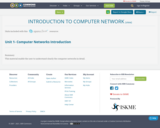
This material enable the user to understand clearly the computer networks in detail.
- Subject:
- Applied Science
- Computer Science
- Engineering
- Material Type:
- Activity/Lab
- Primary Source
- Student Guide
- Date Added:
- 08/27/2019

This material enable the user to understand clearly the computer networks in detail.
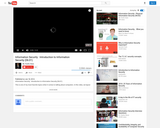
Simply put, this is one of my most favorite topics when it comes to talking about computers. In this video we layout the order of this lesson, as well as give basic definitions of:
•Machine-Level Security
•Network Security
•Internet Security
•Social Engineering
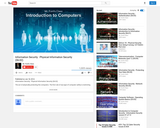
The act of physically protecting the computers. The first rule of any type of computer safety is restricting physical access to it. If a bad guy can get their hands on the computer assume they will be able to gain access to all data contained within.
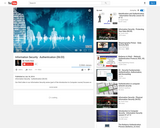
Our third video in our Information Security series (part of the Introduction to Computer course) focuses on Authentication. Authentication is basically proving you are who you say you are
There are three forms of authentication
•Something you know
•Something you have
•Something about you
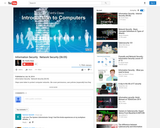
Steps taken to protect computer networks. We cover permissions, user policies (especially how they can get you fired), expectations of privacy, and wireless security.
Links from Video:
-The System Administrator Song http://youtu.be/OpGN3oT1thA
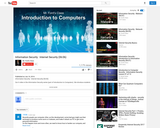
Our 6 video in the Information Security series (part of Introduction to Computers). We introduce students to the concept of Internet Security.
Specifically we look at defining the players: hackers, crackers, and script kiddies. We also look at steps the home user should take to harden the computer: keep their computer updates, run anti-malware software, and have a firewall.
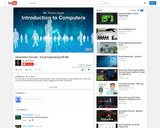
Our last video in the Information Security lesson covers my favorite topic, social engineering. In this video we look at: Dumpster Diving, Shoulder Surfing, Tailgating, and Spam & Phishing.
I also tell the story about how I used tailgating to get access to a classroom at the FBI Academy.
Links from Video:
•Internet Storm Center: https://isc.sans.edu/
•SNORT: https://www.snort.org/
•Security Now: http://twit.tv/sn
•Internet Crime Complaint Center: http://www.ic3.gov/default.aspx
•Hak5: http://hak5.org/
•Facecrooks (facebook.com/Facecrooks)
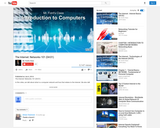
The first video in the Internet series of videos supporting the Introduction to Computers and BCIS series.
In this video we talk about what is a computer network and how that relates to the Internet. We also talk about some of the basic types of network hardware we need to make a network as well as the difference between a LAN and WAN.
If you have no background in networking this is the video to start with before you go any further into the Internet series.
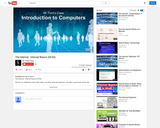
We love our definitions and in this video we define what the Internet is. We take a quick look at how the Internet got its start. Finally we look at how to get on the Internet, how to pick the right ISP and check to see how fast you are surfing.
Links from video:
http://www.speedtest.net/
http://speedtest.comcast.net/

Get ready to Geek out. In this video we take a look under the hood of the Internet. We see what technologies run the Internet and more importantly how the make our lives easier.
Topics we cover include :
*TCP/IP
*HTTP & HTTPS
*FTP
*SMTP
*POP3
*Telnet
Links from Video:
FileZilla https://filezilla-project.org/
CuteFTP: http://www.cuteftp.com/
SmartFTP; http://www.smartftp.com/
Cyberduck: http://cyberduck.io/?l=en
Mozilla Thunderbird: http://www.mozilla.org/en-US/thunderbird/
Star Wars ASCII: http://youtu.be/Dgwyo6JNTDA

Because the World Wide Web is such an important part of the Internet it gets a two part video. In this part we look at the history of the World Wide Web, as well as what the web is, and Hypertext Transport Protocol (HTTP).
In part we examine:
*Uniform Resource Locator (URL)
*Dynamic Name Server (DNS)
*Hypertext Markup Language (HTML)
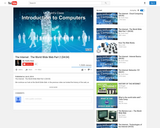
We continue our look at the World Wide Web. in the previous video we looked the history of the web, as well as what Hypertext Transport Protocol (HTTP) was.
In this video we complete our look at the WWW and cover:
*Uniform Resource Locator (URL)
*Dynamic Name Server (DNS)
*Hypertext Markup Language (HTML)
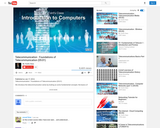
The first video in series 5 Telecommunications. This introduction to telecommunications covers the foundations we need to know.
We look at the basics of electricity, as well as analog and digital signals.
Links from video:
-http://youtu.be/zYS9kdS56l8
-http://www.freemosquitoringtones.org/
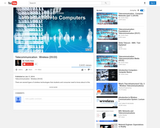
There are several types of wireless technologies that students and consumer need to know about In this video we look at:
-Bluetooth
-Cellular
-Wi-Fi

We take a look at types of computer networks. In part 1 we look at network topologies: bus, ring, star, and mesh.
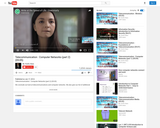
We conclude out look at telecommunications and computer networks. We also give our list of additional resources to check out.
Links from Video:
-Wifi Analyzer https://play.google.com/store/apps/details?id=com.farproc.wifi.analyzer
-Cisco Networking Academy https://www.netacad.com/
-Monoprice http://www.monoprice.com